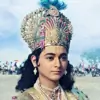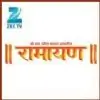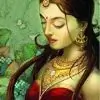First of all one should understand some basic concepts before making strong statements.Even if you describe the show as a nautanki then,its pious too coz the word nautanki itself has strong association with mythological tales.So instead of being dissapointed ,nautanki or melodrama actually adds interest and is equally holy.
Nautanki is one of the most popular folk operatic theater performance traditions of South Asia, particularly in northern India. Nautanki was the single most popular form of entertainment in the villages and towns of northern India.
The pleasure of Nautanki lies in the intense melodic exchanges between two or three performers; a chorus is also used sometimes. Traditional Nautankis usually start late at night, often around 10 p.m. or so, and go all night until sunrise the next morning (for a total of 8'10 hours in duration). There is no intermission in Nautanki performances. The performance is often punctuated with individual songs, dances, and skits, which serve as breaks and comic relief for audiences
Storylines of traditional Nautankis range from mythological and folk tales to stories of contemporary heroes. For instance, while Nautanki plays such as Satya-Harishchandra and Bhakt Moradhwaj are based on mythological themes, Indal Haran and Puranmal originated from folklores.
The history of the Nautanki performative tradition (also referred to as Swang) goes back several hundred years. Nautanki's origins lie in the folk performance traditions of Bhagat and Raasleela of Mathura and Vrindavan in Uttar Pradesh, and Khayal of Rajasthan Nautanki's history becomes clearer in the nineteenth century with the coming of the printing press in India and publication of Nautanki operas in the form of chap-books
Nautanki reached the pinnacle of its glory in the early 20th century when numerous Nautanki performing troupes, known as mandalis (literal meaning: groups) and akharas (literal meaning: wrestling arenas) came into existence. Nautanki mandalis were called akharas due to the prevalence of particular style of singing in Nautanki that required a lot of physical power. The Nautankis staged by these akharas became the main source of entertainment in the small towns and villages of Northern India, and remained as such until television and VCRs began to make inroads beginning in the early 1990s.Riding on its popularity, Nautanki progressed both in terms of form as well as content and its stage became bigger and more professional. Nautanki companies like Natharam's mandali, catching the cue from big Parsi theater (an urban Indian theater style) troupes such as Alfred Theater Company, started to present their performances outside the core region of its audience. Some performances occurred as far as in Myanmar
Nautanki still holds a strong influence over rural peoples' imagination, and even after the spread of mass media (such as television and radio), a crowd of 10,000 to 15,000 can be seen at the top Nautanki performances.
Being a resident of northern India,I take immense pride to watch mythological nautanki and BELIEVE me PEOPLE WHO HAVE WATCHED SWANG of ALLAHABAD couldn't agree more.
So even if the melodrama is included,still it's the HOLY RAMAYANA.
Also,its very interesting that ZEE TV Ramayana is actually taking a lot of interest and is incorporating lot of other popular versions and as I have always said NEW AND UNHEARD TALES are always a WELCOME change from regular stuff.Also I have given certain liberties to the show makers as no words can actually capture or DESCRIBE human emotions.So something left to imagination can be welcome..
Regarding the apsara dance,I was not at all apalled watching it.I was disapointed due the aesthetic appeal ,coz a better dancer would have done wonders,But EQUATING A PERSON'S AWE IN WITNESSING SOME MESMERISING TALENT TO LUST IS UNFAIR AND WRONG.Also BRAHMACHARYA is not about restricting yourself from watching women.It is about having PURE THOUGHTS.So if SAGES actually watched the dance MESMERISED by the dancing TALENT and forgot the muhurat due to being SPELL BOUND,Can we count it as LUST ? CERTAINLY NOT .As a dancer myself,I find it DISGRACEFUL to EQUATE the AWE with LUST.I rewatched the scene again and nowhere does it appear SAGES DROOLING ...Their eyes were wide apart with AWE AND MESMERIZATION and I do not consider it as LUST .
So the AUTHENTIC story of the apsara dance acrually finds its origin somewhere.I am pretty sure the show research team must have gone deep and KUDOS to them for bringing out something fresh and new.
I CERTAINLY AGREE that the BLOOPER was Sita ji without Veil and abhushan ,That was a BIG BLUNDER.I really hope they give her the proper attire which was befitting at that time.
As much as I am against the pallu system,I would love if they had maintained the look of those times.
APART from this,THE SHOW HAS BEEN WONDERFUL,THE TALES INTRICATELY AND INTERESTINGLY WOWEN WITH THE MAIN STORYLINE.I am very happy with the show.
Edited by manzilmukul - 13 years ago






























